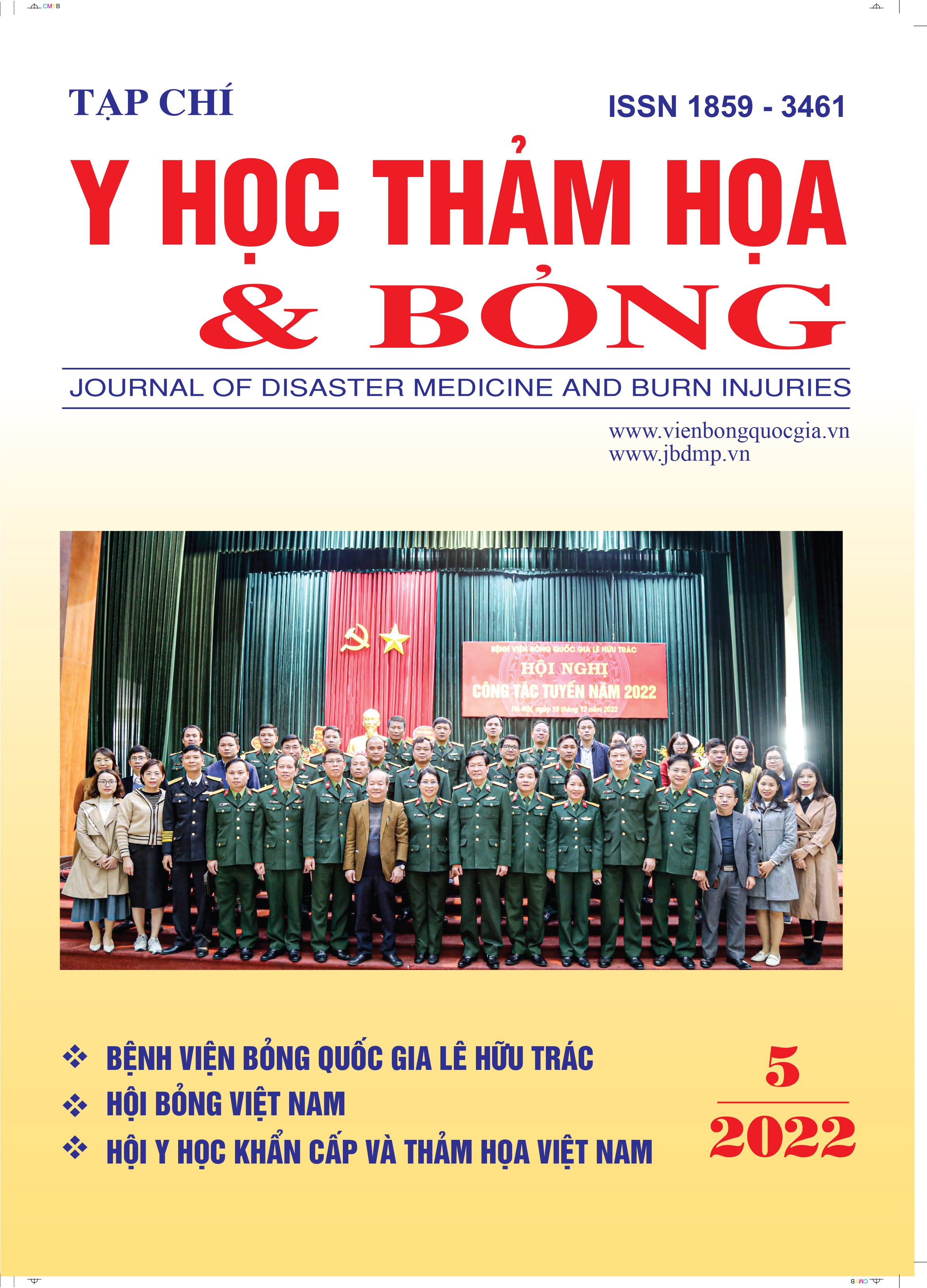Clinical characteristics of patients with rare craniofacial clefts
Main Article Content
Abstract
Objective: To investigate the clinical characteristics according to Tessier classification in patients with rare craniofacial clefts (RCC).
Methods: A cross-sectional descriptive study on 30 patients with rare craniofacial clefts, who were treated at the Department of Craniofacial and Plastic Surgery of the National Hospital of Pediatrics. RCC was recorded according to Tessier's classification and was analyzed for gender, affected side, clinical characteristics, and associated abnormalities.
Results: The most common type was Tessier 7 cleft (T7), followed by T0. There was no difference between the frequency of males and females. Patients with unilateral cleft accounted for a larger proportion than bilateral cleft (76.5% vs 23.5%; p = 0.029 < 0.05). The median and paramedian cleft groups (T0, T1, T30) affected orbit 22.2% - nose 77.8% - mouth 44.4%. The oblique clefts (T3, T4, T5, T11) affected orbit 100% - nose 50% - mouth 50%. The tranverse cleft group (T6, T7, T8) affected mouth 94.1% - ear 29.4%. RCC may present alone or in a syndrome (Treacher Collin, Goldenhar, Hemifacial atrophy), or in combination with other abnormalities.
Conclusion: Because of the diversity of RFC clinical characteristics and associated anomalies, a multidisciplinary approach involving a well-experienced cooperative team is essential for these patients.
Article Details
Keywords
Rare craniofacial cleft, Tessier Cleft
References
2. Tessier P. (1976), “Anatomical classification facial, craniofacial and later-facial clefts”, J Maxillofac Surg, 4(2), 69-92.
3. Eppley B.L. and Havlik R.J. (2005), “The Spectrum of Orofacial Clefting”, Plast Reconstr Surg, 115(7), 14.
4. Kalantar-Hormozi A., Abbaszadeh-Kasbi A., Goravanchi F., et al. (2017), “Prevalence of Rare Craniofacial Clefts”, J Craniofac Surg, 28(5), e467-e470.
5. Agbara R., Akintububo B.O., Fomete B., et al. (2020), “Rare primary craniofacial clefts: pattern, challenges, and management in a Nigerian population”, J Stomatol, 73(5), 240-245.
6. Chung J.H., Yim S., Cho I.-S., et al. (2020), “Distribution, side involvement, phenotype and associated anomalies of Korean patients with craniofacial clefts from single university hospital-based data obtained during 1998-2018”, Korean J Orthod, 50(6), 383-390.
7. Bisetty V., Pillay P., Omodan A., et al. (2022), “Tessier cleft numbers 3 and 4: Presentation of soft tissue and bony deformities in a select South African population”, Transl Res Anat, 29, 100223.
8. Boo-Chai K (1970), “The oblique facial cleft. A report of 2 cases and a review of 41 cases”, Br J Plast Surg, 23(4), 352-359.


